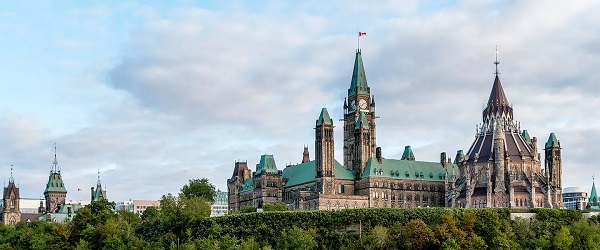Business
UN climate conference—it’s all about money

From the Fraser Institute
This year’s COP wants to fast-track the world’s transition to “clean” energy, help vulnerable communities adapt to climate change, work on “mobilizing inclusivity” (whatever that means) and “delivering on climate finance,” which is shorthand for having wealthier developed countries such as Canada transfer massive amounts of wealth to developing countries.
Every year, the United Nations convenes a Conferences of Parties to set the world’s agenda to reduce greenhouse gas (GHG) emissions. It’s the biggest event of the year for the climate industry. This year’s conference (COP29), which ends on Sunday, drew an army of government officials, NGOs, celebrities and journalists (many flying on GHG-emitting jet aircraft) to Baku, Azerbaijan.
The COP follows a similar narrative every year. It opens with a set of ambitious goals for climate policies, followed by days of negotiating as countries jockey to carve out agreements that most favour their goals. In the last two days, they invariably reach a sticking point when it appears the countries might fail to reach agreement. But they burn some midnight oil, some charismatic actors intervene (in the past, this included people such as Al Gore), and with great drama, an agreement is struck in time for the most important event of the year, flying off to their protracted winter holidays.
This year’s COP wants to fast-track the world’s transition to “clean” energy, help vulnerable communities adapt to climate change, work on “mobilizing inclusivity” (whatever that means) and “delivering on climate finance,” which is shorthand for having wealthier developed countries such as Canada transfer massive amounts of wealth to developing countries.
Some of these agenda items are actually improvements over previous COPs. For example, they’re actually talking about “climate adaptation”—the unwanted stepchild of climate policies—more this year. But as usual, money remains a number one priority. As reported in the Associated Press, “negotiators are working on a new amount of cash for developing nations to transition to clean energy, adapt to climate change and deal with weather disasters. It’ll replace the current goal of $100 billion (USD) annually—a goal set in 2009.” Moreover, “experts” claim the world needs between $1 trillion and $1.3 trillion (yes, trillion) in “climate finance” annually. Not to be outdone, according to an article in the Euro News, other experts want $9 trillion per year by 2030. Clearly, the global edifice that is climate change activism is all about the money.
Reportedly, COP29 is in its final section of the meta-narrative, with much shouting over getting to a final agreement. One headline in Voice of America reads “Slow progress on climate finance fuels anger as COP29 winds down.” And Argus News says “climate finance talks to halt, parties fail to cut options.” We only await the flying in of this year’s crop of climate megafauna to seal the deal.
This year’s conference in Baku shows more clearly than ever before that the real goal of the global climate cognoscenti is a giant wealth transfer from developed to developing countries. Previous climate conferences, whatever their faults, focused more on setting emission reduction targets and timelines and less about how the UN can extract more money from developed countries. The final conflict of COP29 isn’t about advancing clean energy targets or helping vulnerable countries adapt to climate change technologically, it’s all about show me the money.
Author:
Business
RFK Jr. says Hep B vaccine is linked to 1,135% higher autism rate

From LifeSiteNews
By Matt Lamb
They got rid of all the older children essentially and just had younger children who were too young to be diagnosed and they stratified that, stratified the data
The Centers for Disease Control and Prevention (CDC) found newborn babies who received the Hepatitis B vaccine had 1,135-percent higher autism rates than those who did not or received it later in life, Robert F. Kennedy Jr. told Tucker Carlson recently. However, the CDC practiced “trickery” in its studies on autism so as not to implicate vaccines, Kennedy said.
RFK Jr., who is the current Secretary of Health and Human Services, said the CDC buried the results by manipulating the data. Kennedy has pledged to find the causes of autism, with a particular focus on the role vaccines may play in the rise in rates in the past decades.
The Hepatitis B shot is required by nearly every state in the U.S. for children to attend school, day care, or both. The CDC recommends the jab for all babies at birth, regardless of whether their mother has Hep B, which is easily diagnosable and commonly spread through sexual activity, piercings, and tattoos.
“They kept the study secret and then they manipulated it through five different iterations to try to bury the link and we know how they did it – they got rid of all the older children essentially and just had younger children who were too young to be diagnosed and they stratified that, stratified the data,” Kennedy told Carlson for an episode of the commentator’s podcast. “And they did a lot of other tricks and all of those studies were the subject of those kind of that kind of trickery.”
But now, Kennedy said, the CDC will be conducting real and honest scientific research that follows the highest standards of evidence.
“We’re going to do real science,” Kennedy said. “We’re going to make the databases public for the first time.”
He said the CDC will be compiling records from variety of sources to allow researchers to do better studies on vaccines.
“We’re going to make this data available for independent scientists so everybody can look at it,” the HHS secretary said.
— Matt Lamb (@MattLamb22) July 1, 2025
Health and Human Services also said it has put out grant requests for scientists who want to study the issue further.
Kennedy reiterated that by September there will be some initial insights and further information will come within the next six months.
Carlson asked if the answers would “differ from status quo kind of thinking.”
“I think they will,” Kennedy said. He continued on to say that people “need to stop trusting the experts.”
“We were told at the beginning of COVID ‘don’t look at any data yourself, don’t do any investigation yourself, just trust the experts,”‘ he said.
In a democracy, Kennedy said, we have the “obligation” to “do our own research.”
“That’s the way it should be done,” Kennedy said.
He also reiterated that HHS will return to “gold standard science” and publish the results so everyone can review them.
Business
Elon Musk slams Trump’s ‘Big Beautiful Bill,’ calls for new political party
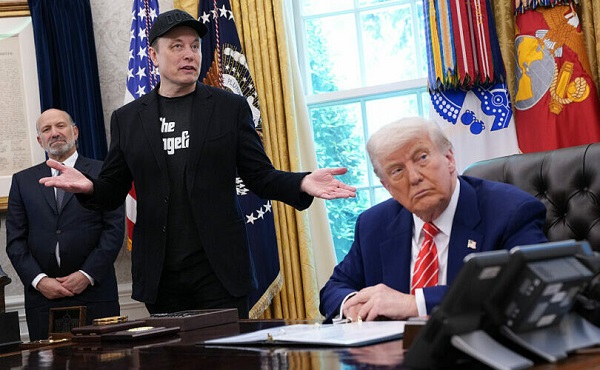
From LifeSiteNews
By Robert Jones
The Tesla CEO warned that Trump’s $5 trillion plan erases DOGE’s cost-cutting gains, while threatening to unseat lawmakers who vote for it.
Elon Musk has reignited his feud with President Donald Trump by denouncing his “Big Beautiful Bill” in a string of social media posts, warning that it would add $5 trillion to the national debt.
“I’m sorry, but I just can’t stand it anymore. This massive, outrageous, pork-filled Congressional spending bill is a disgusting abomination. Shame on those who voted for it: you know you did wrong. You know it,” Musk exclaimed in an X post last month.
I’m sorry, but I just can’t stand it anymore.
This massive, outrageous, pork-filled Congressional spending bill is a disgusting abomination.
Shame on those who voted for it: you know you did wrong. You know it.
— Elon Musk (@elonmusk) June 3, 2025
Musk renewed his criticism Monday after weeks of public silence, shaming lawmakers who support it while vowing to unseat Republicans who vote for it.
“They’ll lose their primary next year if it is the last thing I do on this Earth,” he posted on X, while adding that they “should hang their heads in shame.”
Every member of Congress who campaigned on reducing government spending and then immediately voted for the biggest debt increase in history should hang their head in shame!
And they will lose their primary next year if it is the last thing I do on this Earth.
— Elon Musk (@elonmusk) June 30, 2025
The Tesla and SpaceX CEO also threatened to publish images branding those lawmakers as “liars.”
Trump responded on Truth Social by accusing Musk of hypocrisy. “He may get more subsidy than any human being in history,” the president wrote. “Without subsidies, Elon would probably have to close up shop and head back home to South Africa… BIG MONEY TO BE SAVED!!!”
( @realDonaldTrump – Truth Social Post )
( Donald J. Trump – Jul 01, 2025, 12:44 AM ET )Elon Musk knew, long before he so strongly Endorsed me for President, that I was strongly against the EV Mandate. It is ridiculous, and was always a major part of my campaign. Electric cars… pic.twitter.com/VPadoTBoEt
— Donald J. Trump 🇺🇸 TRUTH POSTS (@TruthTrumpPosts) July 1, 2025
Musk responded by saying that even subsidies to his own companies should be cut.
Before and after the 2024 presidential election, Musk spoke out about government subsidies, including ones for electric vehicles, stating that Tesla would benefit if they were eliminated.
This latest exchange marks a new escalation in the long-running and often unpredictable relationship between the two figures. Musk contributed more than $250 million to Trump’s reelection campaign and was later appointed to lead the Department of Government Efficiency (DOGE), which oversaw the termination of more than 120,000 federal employees.
Musk has argued that Trump’s new bill wipes out DOGE’s savings and reveals a deeper structural problem. “We live in a one-party country – the PORKY PIG PARTY!!” he wrote, arguing that the legislation should be knows as the “DEBT SLAVERY bill” before calling for a new political party “that actually cares about the people.”
It is obvious with the insane spending of this bill, which increases the debt ceiling by a record FIVE TRILLION DOLLARS that we live in a one-party country – the PORKY PIG PARTY!!
Time for a new political party that actually cares about the people.
— Elon Musk (@elonmusk) June 30, 2025
In June, Musk deleted several inflammatory posts about the president, including one claiming that Trump was implicated in the Jeffrey Epstein files. He later acknowledged some of his comments “went too far.” Trump, in response, said the apology was “very nice.”
With the bill still under Senate review, the dispute underscores growing pressure on Trump from fiscal hardliners and tech-aligned conservatives – some of whom helped deliver his return to power. Cracks in the coalition may spell longer term problems for the Make America Great Again movement.
-
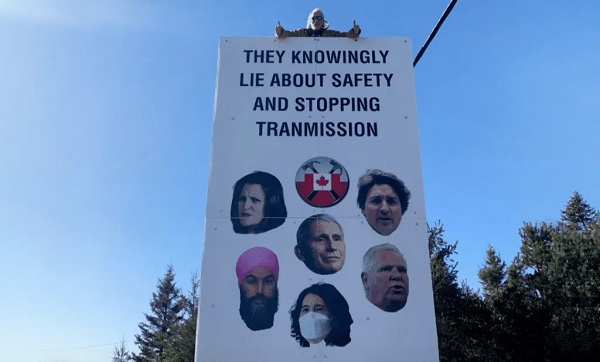
 COVID-192 days ago
COVID-192 days agoOntario man launches new challenge against province’s latest attempt to ban free expression on roadside billboards
-

 Energy2 days ago
Energy2 days agoThis Canada Day, Celebrate Energy Renewal
-

 COVID-1916 hours ago
COVID-1916 hours agoNew Peer-Reviewed Study Affirms COVID Vaccines Reduce Fertility
-
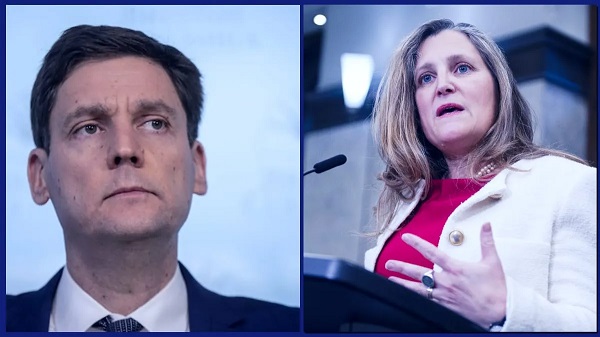
 Business12 hours ago
Business12 hours agoOttawa Funded the China Ferry Deal—Then Pretended to Oppose It
-
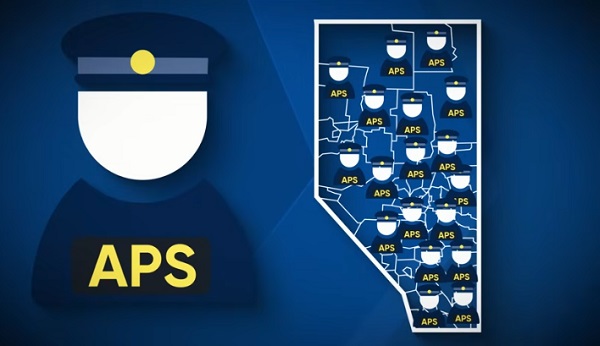
 Alberta2 days ago
Alberta2 days agoAlberta Next Takes A Look At Alberta Provincial Police Force
-

 Alberta2 days ago
Alberta2 days agoCanadian Oil Sands Production Expected to Reach All-time Highs this Year Despite Lower Oil Prices
-

 MAiD14 hours ago
MAiD14 hours agoCanada’s euthanasia regime is not health care, but a death machine for the unwanted
-
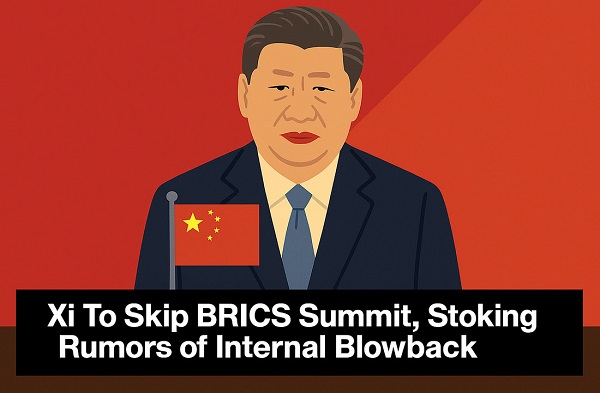
 International2 days ago
International2 days agoPresident Xi Skips Key Summit, Adding Fuel to Ebbing Power Theories





